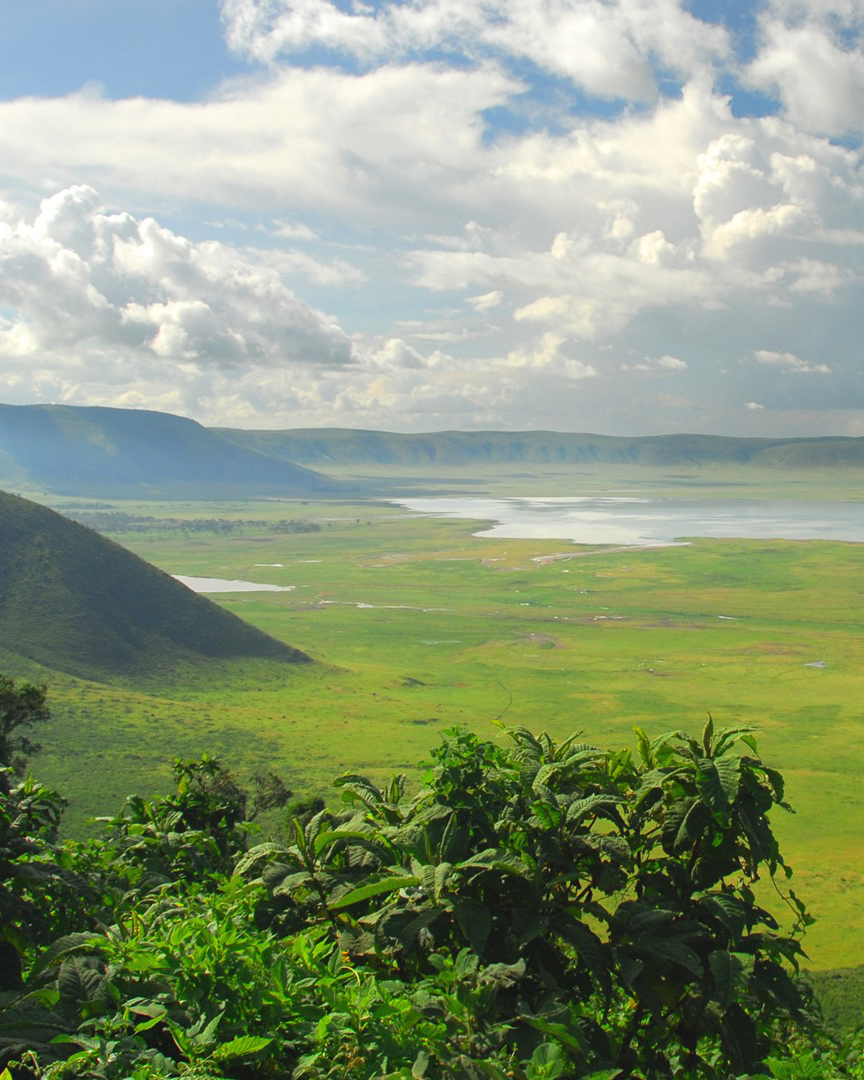
Natural Wonder Unveiled – Ngorongoro Crater, a breathtaking volcanic caldera, offers a sanctuary for some of Africa’s densest populations of wildlife. This majestic natural amphitheater, ringed with steep walls and rich in flora and fauna, is a microcosm of African wilderness, making it an unparalleled spot for wildlife viewing and photography.
Start PlanningTemperatures range from 4°C (39°F) in the colder months to 25°C (77°F) in the warmer months
1,800 meters (5,900 feet)
It spans about 260 square kilometers (100 square miles) and is approximately 19 kilometers (12 miles) across
Swahili is the official language, but English is widely spoken in tourist areas and hotels.
The Tanzanian Shilling (TZS) is the local currency, but US dollars are widely accepted in tourist areas.
The nearest airstrip is Lake Manyara Airport, which accommodates flights from major cities like Arusha and Dar es Salaam. From the airport, it's about a 90-minute drive to the crater.
Peak Season: The dry seasons from June to October and from December to March are ideal for wildlife
Off-Peak Season: The wet seasons in April, May, and November can be less crowded. These months offer the chance to see the lush, green landscape and migratory birds, but travel can be more challenging due to muddy conditions.
Ngorongoro Crater: The main draw is this large volcanic caldera, home to a rich variety of wildlife including lions, rhinos, and elephants. It offers unique and highly accessible wildlife viewing.
Olduvai Gorge: Known as the "Cradle of Mankind," it's an important paleoanthropological site where early human fossils were discovered.
Empakaai Crater: A smaller crater nearby, known for its deep lake and lush forest, offering opportunities for hiking and bird watching.
Sun protection and hydration are key. Being located on the equator means the sun is significantly harsher than in places like Europe.
Take extra care on safari and beach excursions.
Most resorts offer wireless internet connections, as do airports and even airstrips in national parks. For maximum connectivity throughout your trip, consider purchasing a local SIM card at the international airport upon arrival.
Vodacom and Airtel offer the best coverage in Tanzania, especially in national parks and rural areas.
A tourist visa is required for most tourists visiting Tanzania, which can be obtained upon arrival or preferably beforehand via the online e-visa system.
A yellow fever vaccination is required if arriving from a country with risk of Yellow Fever.
Ngorongoro Crater offers unique wildlife experiences such as:
Big Five Sightings: The crater is one of the best places in Africa to see the Big Five (lion, leopard, rhinoceros, elephant, and buffalo) in a relatively small area.
Bird Watching: The crater is home to a diverse bird population, including flamingos, ostriches, and various raptors.
It's important to carry enough cash, as many lodges and camps do not have facilities for tipping with credit cards and might not have enough cash for change.
A common practice is to tip $10-$15 per guest, per day. This usually goes into a communal tip box and is shared among all the lodge or camp staff, including those working behind the scenes.
For individuals who guide you through your safari (guides and trackers), a typical tip is about $10-$20 per person, per day.
At restaurants, tipping about 10% of the bill is customary.
Always ensure that your tips are given as a token of appreciation for good service, rather than out of obligation.
Drones are prohibited unless you have obtained a specific permit. Customs conducts scans of all bags upon arrival and will confiscate any drones, holding them until your departure day.